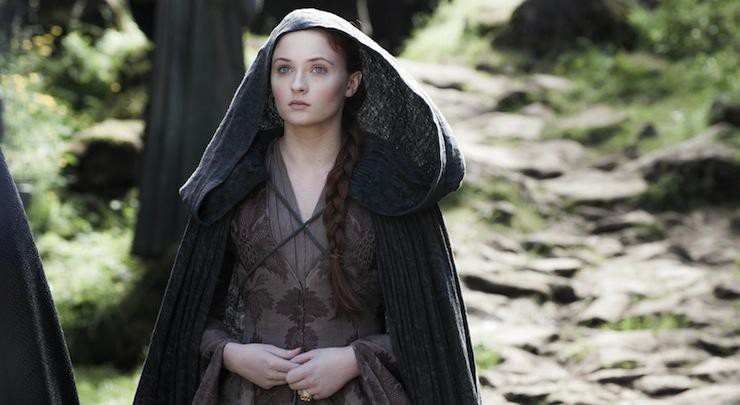Since my novel The Girl at Midnight came out in April, I’ve noticed one question—or one of its many permutations–popping up in quite a few interviews: How did you approach writing a strong female character? My answer tends to focus on Echo, the book’s primary point-of-view character (there are several). She’s only seventeen but she’s lived a hard life. It’s calcified her in some ways and softened her in others. I’ve got my routine answer down at this point, but every time that question rears its head, I get to thinking about the way in which we define strength in women, fictional and real.
For example, the character of Cinderella appears in conversations about feminine strengths and weaknesses. She’s often discussed as a passive figure in popular folklore—a girl who waits around for a prince to come and rescue her. But when I look at her tale, I see solid steel at her core. How many of us can say we’ve survived abuse and come out of it kind and compassionate and courageous? Cinderella has seen the darker side of family, and like Echo, she escapes to build her own life outside of the hostile environment that created her. But we still rarely see her, or characters like her, referred to as “strong” because their strength is of a quieter sort. For this list, I’ve decided to focus on fictional women of under-appreciated or otherwise unconventional strength.
Genya—Shadow and Bone by Leigh Bardugo
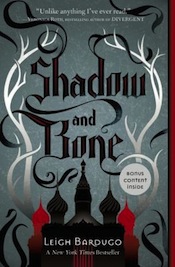 The protagonist of Bardugo’s Grisha trilogy, Alina Starkov, starts the series as an unlikely hero who comes into her own power. It’s a fascinating transition to behold, but what I find equally fascinating is Genya, the grisha she befriends upon her arrival in Os Alta. Genya is a Tailor, but not the kind who hems trousers and sews on buttons. Altering physical appearances in her specialty—she provides us with the Ravkan version of a makeover montage when she gets her hands on the plain Alina. On the surface, Genya would seem to be preoccupied with the superficial, but as the series progresses, you see that Genya has learned to weaponize her beauty. She is cunning, clever, and compassionate—all in all, not a Tailor to be trifled with.
The protagonist of Bardugo’s Grisha trilogy, Alina Starkov, starts the series as an unlikely hero who comes into her own power. It’s a fascinating transition to behold, but what I find equally fascinating is Genya, the grisha she befriends upon her arrival in Os Alta. Genya is a Tailor, but not the kind who hems trousers and sews on buttons. Altering physical appearances in her specialty—she provides us with the Ravkan version of a makeover montage when she gets her hands on the plain Alina. On the surface, Genya would seem to be preoccupied with the superficial, but as the series progresses, you see that Genya has learned to weaponize her beauty. She is cunning, clever, and compassionate—all in all, not a Tailor to be trifled with.
Sansa—A Song of Ice and Fire series by George R.R. Martin
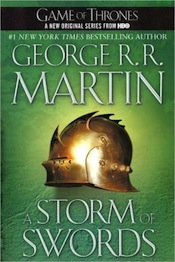 In A Storm of Swords, Sansa takes stock of her lot in life and finds that she’s changed from the lemon cake-loving girl she was when she came to King’s Landing, eager to marry the handsome Prince Joffrey (we all know how that turned out) and make her mark on the world as a future queen. Trapped in a lions’ den, Sansa discovers that she has little but her own internal strength to see her through the dangers of court. “My skin,” she says, “has turned to porcelain, to ivory, to steel.”
In A Storm of Swords, Sansa takes stock of her lot in life and finds that she’s changed from the lemon cake-loving girl she was when she came to King’s Landing, eager to marry the handsome Prince Joffrey (we all know how that turned out) and make her mark on the world as a future queen. Trapped in a lions’ den, Sansa discovers that she has little but her own internal strength to see her through the dangers of court. “My skin,” she says, “has turned to porcelain, to ivory, to steel.”
Clara—Winterspell by Claire Legrand
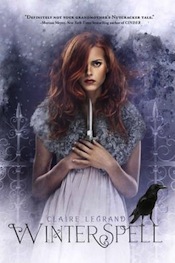 Winterspell‘s Clara is a complex character. Thanks to her godfather Drosselmeyer’s tutelage, she can kill a man with her bare hands, but she’s still haunted by an almost paralyzing fear. Clara comes of age in an alternate version of New York governed by a shadowy (and deadly) criminal cabal and is pursued relentlessly by the creepiest, scariest man imaginable—and he’s got the trail of dead bodies to prove it. Clara lives her life in a fog of fear and insecurity until she’s forced to find her strength to save the lives of the ones she loves—or die in the attempt.
Winterspell‘s Clara is a complex character. Thanks to her godfather Drosselmeyer’s tutelage, she can kill a man with her bare hands, but she’s still haunted by an almost paralyzing fear. Clara comes of age in an alternate version of New York governed by a shadowy (and deadly) criminal cabal and is pursued relentlessly by the creepiest, scariest man imaginable—and he’s got the trail of dead bodies to prove it. Clara lives her life in a fog of fear and insecurity until she’s forced to find her strength to save the lives of the ones she loves—or die in the attempt.
Roza—Bone Gap by Laura Ruby
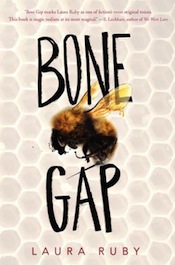 Laura Ruby’s Bone Gap is an ethereal dream of a novel. Ruby’s rich cast of characters is largely responsible for that, and one girl in particular was especially enthralling. Roza, the person whose disappearance serves as the novel’s catalyzing event, is a woman of almost unearthly beauty. And it’s because of that beauty that she’s underestimated and targeted. While some may look at Roza and see nothing but more than a pretty face, her beauty masks the iron at her core. She’s seen the darkest parts of men’s hearts and those experiences have molded her into something indestructible.
Laura Ruby’s Bone Gap is an ethereal dream of a novel. Ruby’s rich cast of characters is largely responsible for that, and one girl in particular was especially enthralling. Roza, the person whose disappearance serves as the novel’s catalyzing event, is a woman of almost unearthly beauty. And it’s because of that beauty that she’s underestimated and targeted. While some may look at Roza and see nothing but more than a pretty face, her beauty masks the iron at her core. She’s seen the darkest parts of men’s hearts and those experiences have molded her into something indestructible.
Simmea—The Just City by Jo Walton
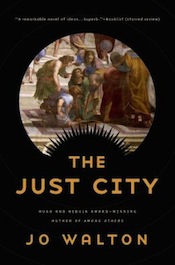 In The Just City, a group of idealists, brought together by the goddess Athena, run a experiment the likes of which the world has never seen: They create Plato’s Republic, exactly as he’d envisioned it. Well, they try. The Just City’s founders purchase slave children to raise in their utopia; one of the children, Simmea, is a girl born into unfortunate circumstances. Slavers raped her mother and killed her family as she watched. She experienced her own horrors on the slave ship en route to the Just City and these experiences mold her into the person she becomes: a woman who prizes justice, kindness, compassion, integrity, and intellectual curiosity above all things.
In The Just City, a group of idealists, brought together by the goddess Athena, run a experiment the likes of which the world has never seen: They create Plato’s Republic, exactly as he’d envisioned it. Well, they try. The Just City’s founders purchase slave children to raise in their utopia; one of the children, Simmea, is a girl born into unfortunate circumstances. Slavers raped her mother and killed her family as she watched. She experienced her own horrors on the slave ship en route to the Just City and these experiences mold her into the person she becomes: a woman who prizes justice, kindness, compassion, integrity, and intellectual curiosity above all things.
Melissa Grey was born and raised in New York City. She wrote her first short story at the age of twelve and hasn’t stopped writing since. After earning a degree in fine arts at Yale University, she traveled the world, then returned to New York City where she currently works as a freelance journalist. Her debut novel The Girl at Midnight is available now from Random House. Follow @meligrey on Twitter.










